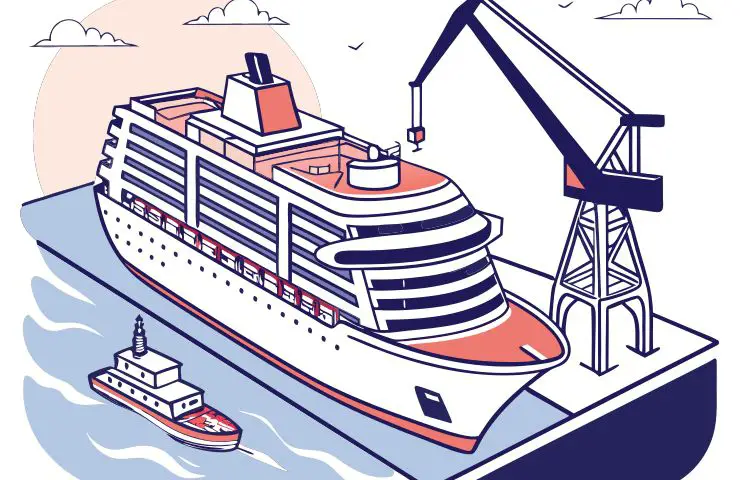Hydrogen Fuel Cells Power World’s First Zero-Emission Cruise Ship
Viking Libra: A New Era in Eco-Friendly Cruising

On September 9, 2025, a significant milestone was achieved in the maritime industry with the laying of the keel for the Viking Libra at Fincantieri’s Ancona shipyard in Italy. This groundbreaking vessel is set to become the world’s first cruise liner powered entirely by hydrogen fuel cells, marking a pivotal moment in the quest for zero-emission technology at sea. Developed through a collaboration between Viking, Fincantieri, and Isotta Fraschini Motori, the Viking Libra aims to redefine sustainable cruising while accommodating nearly a thousand guests.
Innovative Design Meets Tradition
Located on Italy’s Adriatic coast, Ancona has a rich shipbuilding history dating back to Roman times. Today, Fincantieri’s state-of-the-art facility combines traditional craftsmanship with modern technology, making it the perfect birthplace for the Viking Libra. Weighing in at approximately 54,300 gross tons, this cruise ship will feature 499 staterooms, offering luxurious accommodations for its guests. Scheduled to launch in late 2026, the Viking Libra promises all the amenities expected from a high-end cruise experience, but with a revolutionary propulsion system powered solely by hydrogen fuel cells.
The ship’s hydrogen fuel cells will generate up to 6 megawatts of clean energy, producing only water vapor as a byproduct. This innovative approach is the result of over a decade of collaboration between Viking and Fincantieri, during which they have successfully launched 28 vessels. With the addition of Isotta Fraschini Motori, the Viking Libra will utilize a specialized polymer electrolyte membrane (PEM) fuel cell system, specifically designed to meet the demands of large passenger ships. This project not only highlights advancements in eco-friendly technology but also showcases the potential for sustainable practices in the cruise industry.
Hydrogen Fuel Cells: The Future of Maritime Travel
The Viking Libra’s propulsion system is a hybrid model that integrates electric motors with hydrogen fuel cells. The process begins with liquefied hydrogen stored in insulated tanks at temperatures as low as -253°C. This hydrogen is then fed into the PEM fuel cells, where it undergoes a chemical reaction that splits hydrogen molecules into protons and electrons. The resulting flow of electrons generates electricity, powering the ship’s motors and essential onboard systems such as lighting and climate control, all without emitting carbon emissions.
Additionally, the ship’s hydrogen storage system is designed to minimize boil-off, ensuring a steady supply of fuel to the cells. This setup not only enhances safety but also demonstrates the feasibility of hydrogen solutions for long-distance voyages. The Viking Libra serves as a model for what sustainable bunkering could look like in the future, paving the way for greener practices in the maritime sector.
Setting New Standards in the Cruise Industry
Historically, cruise ships have relied on heavy fuel oil, contributing significantly to carbon emissions and other pollutants. However, the Viking Libra represents a bold step toward achieving 100% zero-emission technology, bypassing traditional pollutants entirely. With Europe’s Green Deal and stringent maritime decarbonization targets in place, Viking and Fincantieri are not just complying with regulations; they are setting a new industry benchmark. Stakeholders, including regulators and port authorities, are keenly observing how the development of hydrogen infrastructure unfolds, which may lead to policy adjustments to support this emerging trend.
The implications of the Viking Libra extend beyond the cruise industry. The project is expected to accelerate the adoption of hydrogen fuel cells in shipping, stimulate investments in liquid hydrogen bunkering at ports, and encourage further research into green hydrogen production. These advancements could also influence industrial decarbonization efforts in sectors such as heavy industry and rail, contributing to a broader shift toward sustainable energy solutions.
Libra’s Logothetis swiftly lifts stake in fuel tech group SulNOx to 22.46%
As Viking and Fincantieri continue to order more hydrogen-powered vessels, each new ship will benefit from the lessons learned during the Viking Libra’s development. However, challenges remain, particularly in scaling global hydrogen production, transport, and bunkering. The Viking Libra demonstrates that a hydrogen-powered future is possible, but achieving the same ease of access for hydrogen as currently enjoyed with diesel remains a significant hurdle.
A Greener Future Awaits
The laying of the keel for the Viking Libra signifies more than just a construction achievement; it represents a commitment to sustainable energy in the maritime industry. If successful, this hydrogen fuel cell-powered cruise liner could lead the way for eco-friendly travel, steering an industry historically reliant on fossil fuels toward a cleaner, more sustainable future.
